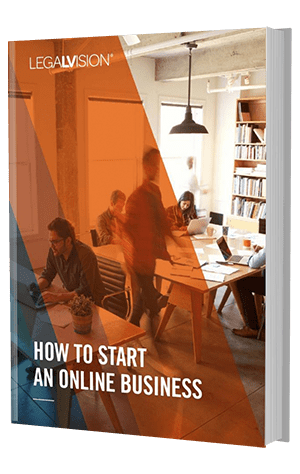If your business offers Software as a Service (SaaS), you need a SaaS agreement with each customer. SaaS agreements take different forms depending on who your customers are and how your customers access your software. This article will explore different types of SaaS agreements and how your customers can accept your agreement. It will also highlight critical clauses in a SaaS agreement that relate to how the agreement starts and finishes.
1. Consider How Parties Enter the Contract
It is important to determine the format of your SaaS agreement and consider how it will be entered into by your customers.
It is essential to consider how you want to incorporate your SaaS agreement into your sign-up process before drafting it. This will inform the format of the agreement. For example, you might want most of your clients to sign up online for ease. However, you will allow larger enterprise clients that are prepared to spend a lot of money with you to sign up for different terms offline and perhaps negotiate those terms.
You may present SaaS agreements to customers in an online format, with a box customers can tick to indicate their acceptance. This format is known as “clickwrap”. SaaS agreements in this form, in particular, may be referred to as Terms and Conditions. This format is generally used for off-the-shelf SaaS, where customers choose their subscription, plan or membership and sign up online. Generally, these SaaS agreements are not negotiated.
SaaS agreements may also be in a format accepted with a signature (whether signed with wet ink or using an online document execution platform). This format is also known as “offline” or “hard copy”. Usually, this type of SaaS agreement contains a customisable schedule outlining the commercial elements of the arrangement. Agreements in this format are more appropriate for offering a bespoke SaaS solution, and parties will often negotiate the terms before signing.
Negotiation vs Take-It-or-Leave-It
Whether or not you customise your SaaS agreement may depend on:
- how customisable the SaaS itself is;
- what types of customers you attract; and
- whether you expect there to be negotiations between you and your customers before they accept your agreement.
Browsewrap Agreements
It is inadvisable to place your SaaS agreement on your website as a ‘browsewrap’ agreement. Browsewrap means that the customer is not prompted to take an active step (such as ticking a box or inserting their signature) to accept the agreement.

It’s now easier than ever to start a business online. But growing and sustaining an online business requires a great deal of attention and planning.
This How to Start an Online Business Manual covers all the essential topics you need to know about starting your online business.
The publication also includes eight case studies featuring leading Australian businesses and online influencers.
2. Key Clauses in a SaaS Agreement
Intellectual Property
Licence to use the SaaS
It is important to have good oversight over the use of your intellectual property. SaaS agreements will usually grant the customer and its users a licence to use the solution and any intellectual property on the condition that they comply with the terms and conditions set out in the agreement.
If you can monitor and restrict use during the term, you will have more visibility over:
- how your intellectual property is being used; and
- whether your customers are complying with the terms and conditions of the licence.
Your Customer’s Intellectual Property
You will also need to consider the ownership of any intellectual property from your customers that interoperates with the platform. For example, consider whether your clients can upload their own documents, images or branding to the platform. If so, you will need a licence from them to use such content.
New Intellectual Property
Your SaaS agreement should also deal with who owns new intellectual property that is created through the use of your SaaS. For instance, if your SaaS uses your customer’s IP to create new IP, consider who owns that resulting new IP. This is a commercial decision but must be set out in the SaaS Agreement.
Term
Your SaaS Agreement will need to clearly state how long the agreement will continue. There are several arrangements, including:
- a fixed-term subscription, for example, one year or three years;
- a subscription period, for instance, a monthly period, that automatically continues until terminated; and
- a fixed-term subscription with an option to renew. For instance, the initial term of the subscription might continue for one year, and at the end of that first year, the subscription will renew for another year unless either party chooses not to renew.
When the Services Start
It is important to state when your customer will have access to your SaaS.
Alternatively, for a more bespoke or customised SaaS, where you are building a solution for your customer, you may have a concept of a “go-live date”, which is the date from which the customer’s subscription starts. Your customer might sign the SaaS agreement on a particular date. However, certain things might need to take place before the go-live date. For instance, to ensure that the SaaS is fully customised and ready to use from the go-live date, you might:
- set up accounts for your customer and their authorised users;
- provide training to a customer’s staff members;
- load the customer’s information into your platform;
- configure the SaaS to ensure it operates on your customer’s systems; or
- procure hardware for the customer, which is used alongside the SaaS.
Additionally, your SaaS agreement should state when the subscription fee starts. For instance, determine whether it is from the date that they sign up for the SaaS and accept the agreement or from the go-live date.
Free Trial
You may also choose to provide a free trial at the start of the term. During this time, your customer will have the chance to test drive your SaaS, perhaps with some added freedom. For instance, they might not pay any fees for the trial period, or you might offer to refund the fees paid for it if they do not continue with the SaaS at the end of the period. A free trial allows a customer to end the agreement at the end of the trial period without being locked into a subscription.
Fee Structure
It is crucial to clearly articulate your fees and payment structure. Doing this will ensure that you get paid on time. Furthermore, it will help avoid ambiguity and confusion among customers, which can lead to payment disputes. SaaS is often provided on a subscription basis, but you might charge any combination of the following:
- a deposit;
- subscription fees, for example, on a monthly or yearly basis;
- subscription fees, to be paid at the start or end of a period, for example, a monthly fee to be paid at the start of each month;
- fees for any hardware you supply along with the SaaS;
- fees per authorised user;
- additional fees for additional services, customisation or development;
- fees for support, implementation, or hosting services; and
- fees for expenses you incur while providing the SaaS.
Your SaaS agreement should explain how the fees are to be paid. For example, you might take your customers’ payment details using a third-party payment processor and automatically debit the fees. Alternatively, you may invoice your customers for the fees.
Cancellations and Termination
We have covered above that it needs to be clear when the term, access to the SaaS, and payment begin. Similarly, it needs to be clear how the agreement ends.
Suppose you offer an automatically-renewing subscription. Accordingly, your agreement should explain how each party can end the subscription. Additionally, if the agreement ends on a particular date, the contract should state whether each party can terminate ‘for convenience’, in other words, without providing a reason.
Termination Fees
If you charge an early termination fee when your customer terminates the agreement before the end of the term, you will need to ensure that this fee is not a penalty. You should calculate early termination fees as a genuine estimate of the loss you have suffered due to the customer terminating early. If early termination fees are not a genuine estimate of your loss, they will be considered a penalty and will not be enforceable.
Refunds
Your SaaS Agreement should address your refund process. It may be that you offer:
- no refunds (subject to any rights your customers may have under the Australian Consumer Law); or
- partial or pro-rata refunds where the agreement is terminated part-way through a subscription term.
If you offer refunds, it is important to set parameters around this by spelling out the circumstances when you do and do not offer refunds. For instance, you may offer a partial refund to customers who have paid for a SaaS subscription upfront for the year but wish to terminate the subscription before the end of the year. This is a commercial decision for you to make. Your legal team can advise on how best to protect yourself if you choose to offer refunds.
Effects of Termination
Several things will need to happen when your SaaS agreement ends, and you must spell these out in the agreement. For example:
- you will stop providing the SaaS to your customer;
- your customer should pay you all fees owing;
- you may remove or disable your customer’s (and their authorised users’) account;
- you may return any of your customers’ materials, intellectual property, or data that they shared with you or uploaded to the SaaS; and
- your customer should return to you any of your confidential information or intellectual property that you provided to them.
Substantially Prejudicial Terms
The recent legal changes will affect you if you provide your SaaS to a customer in New South Wales, defined as a ‘consumer’ under the Australian Consumer Law. If these laws apply to you, you must disclose to your customer any substantially prejudicial clauses in your SaaS agreement before they accept your agreement.
Your legal team can advise which clauses in your agreement may be substantially prejudicial to your consumer and, therefore, which clauses you must disclose.
Continue reading this article below the formKey Takeaways
As a supplier of software as a service, you will need a well-drafted SaaS agreement in place with customers. The format of the agreement is important to get right, as is the agreement’s content. An explicit SaaS agreement will set out each party’s rights and responsibilities and help reduce the risk of a dispute happening down the track.
If you would like assistance preparing a SaaS agreement and including key clauses, our experienced contract lawyers can assist as part of our LegalVision membership. For a low monthly fee, you will have unlimited access to lawyers to answer your questions and draft and review your documents. Call us today on 1300 544 755 or visit our membership page.
Frequently Asked Questions
SaaS agreements are for businesses that offer Software as a Service and should be in place with each customer. SaaS agreements take different forms depending on who your customers are and how your customers access your software.
This is where your customer is not prompted to take an active step. An active step includes ticking a box or inserting a signature to accept the agreement.
We appreciate your feedback – your submission has been successfully received.












